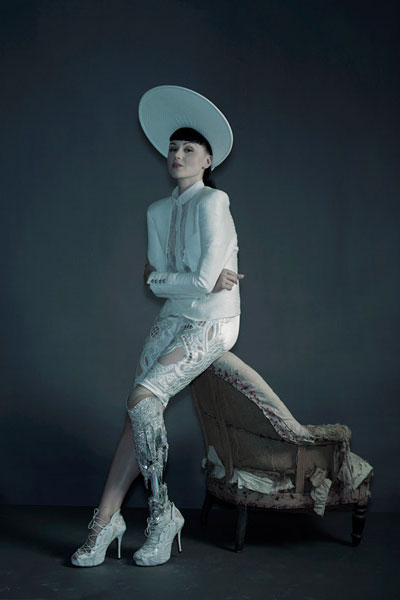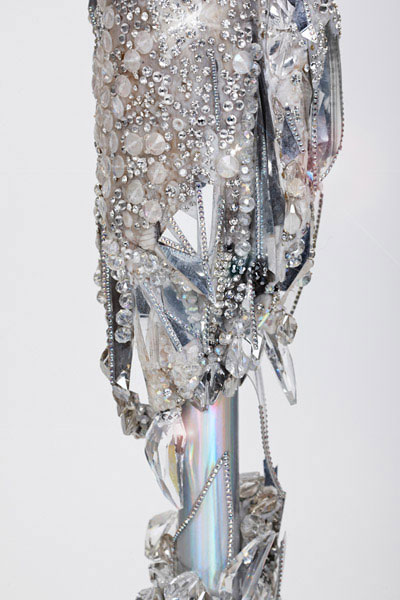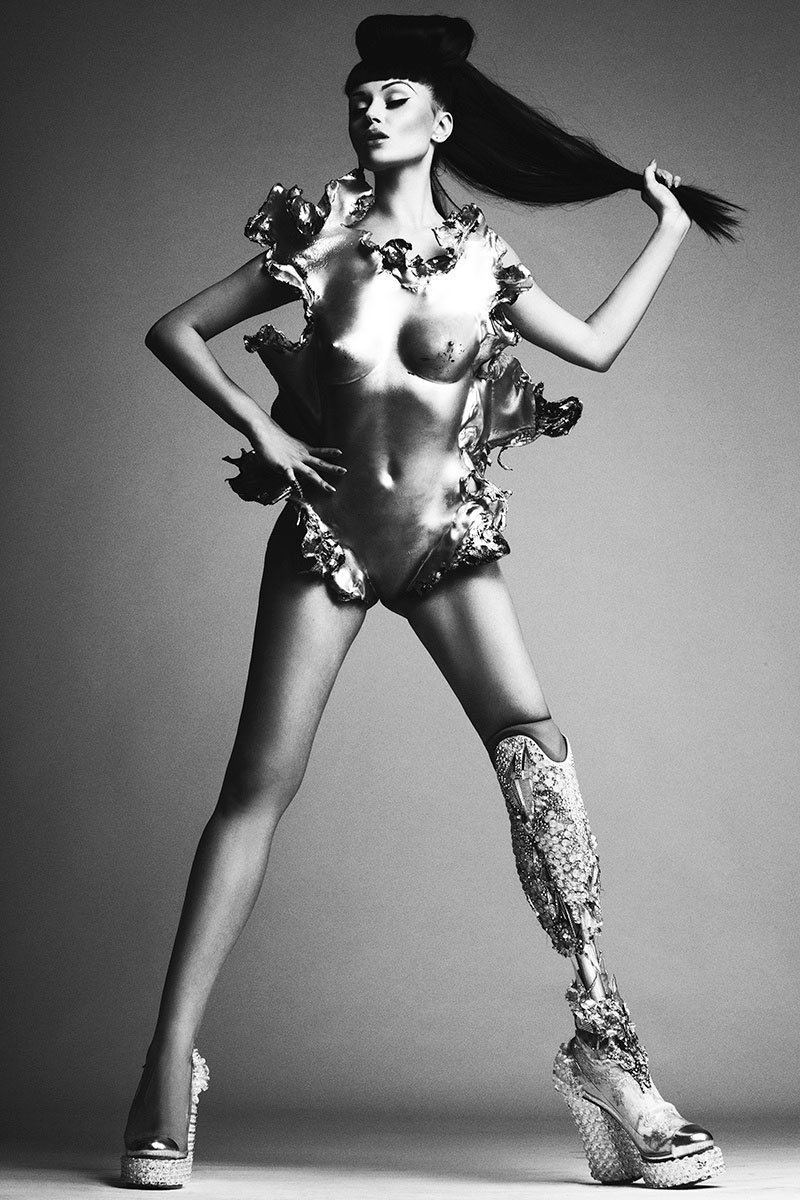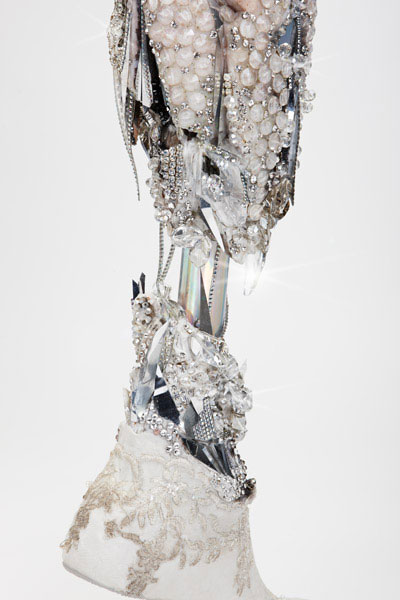From revolutions with 3D printing to breakthroughs in robotics, we’ve been fortunate enough to cover some exciting advances in prosthetics technology that are making it easier for amputees to live the kind of normal lives most of us take for granted.
But when it comes to groundbreaking prosthetics, it’s safe to say that we haven’t previously seen anything like the work of Sophie de Oliveira Barata, U.K.-based founder of the so-called Alternative Limb Project.
The Alternative Limb Project is transforming the medium of prosthetics into the ultimate form of self-expression. To do this, it’s blurring the line between everyday prostheses and body modification — with even a hint of transhumanism creeping in! Whether it’s an otherwise realistic arm that appears to be hatching a snake or a Swarovski crystal-encrusted leg worn at the 2012 Paralympics closing ceremony, Barata is doing astonishing work in an area few others have touched.
“I come from an art background, and studied film and special effects with a plan to go into the film and television industry,” de Oliveira Barata told Digital Trends.
With an interest in prosthetics, de Oliveira Barata’s life took an unexpected turn when a friend suggested she look into the medical prosthetics industry. She did, and found herself instantly hooked. “To be able to mimic the human body seemed like the ultimate challenge,” she continued. “You were doing special effects that couldn’t rely on tricks of the camera.”
De Oliveira Barata spent the next eight years working for a company manufacturing realistic prostheses. “I was building fingers, toes, partial hands, partial feet, and full arms and legs,” she said. “It was an incredibly rewarding job.”
After a while, however, she missed the imaginative element that had drawn her to movies. In her spare time, she started experimenting again with materials to create prostheses that didn’t necessarily resemble the body part a person had lost.
“I wondered whether there was anyone out there who would want a prosthetic that was a little bit more unusual; where the idea was to draw attention to the prosthetic rather than to hide it so as to better blend in.”
“To push the boundaries of what’s possible, it’s important to work with other people.”
Through a Google search for “amputee models,” de Oliveira Barata met the Latvia-born English model Viktoria Modesta, who wound up wearing the glittering prosthetic worn at the aforementioned Paralympics. Over the next several years, Barata has grown the business — and now has a team of people she works with regularly to bring her creations to (semi) life.
“My skillset is mainly in silicone, although I draw on the skills of other people who can come in and assist if they have the relevant experience,” she said. “That could be mechanical engineering, electronics, 3D modelling, metalwork, woodwork, metalwork — a wide variety of skills. To create really unusual pieces, to push the boundaries of what’s possible, it’s important to work with other people.”
All of the pieces created by the Alternative Limb Project are unique and custom-made for clients. “We typically start with a mood board,” she said. “I use Pinterest a lot, and try to look for patterns in what people are interested in as relates to aesthetics. Some clients really know what they want and they’ll be the ones who drive the conversation. In other cases, I’m able to use my imagination a bit more — although I’m open to both approaches to collaboration.”

Usually client will come with existing limb structure, and de Oliveira Barata then works with their prosthetist, although in some cases she builds the entire piece from scratch.
In many cases, de Oliveira Barata adapts existing prostheses, much as a car customizer would do with an existing vehicle. “I have built entire arms on occasion, but generally what I do is cosmetic,” she said. “That’s particularly true if it’s a full limb, rather than a partial foot, for example.”
Costs typically start at around £700 ($850) and run all the way up to £10,000 ($12,200), although an average build comes in at around £5,000 ($6,100).
The biggest project the Alternative Limb Project has created was the so-called Phantom Limb, sponsored by games publisher Konami, and developed with Open Bionics and GTR. Built for a biological science graduate with a passion for tech, the robotic Metal Gear Solid-inspired limb comprised a 3D-printed hand which received signals from electrodes in an attached harness to form various grips and gestures, using buttons in the forearm.
It also boasted a mechanical elbow, a magnetic attachment for holding items such as cameras, built-in lights that respond to an embedded heart rate sensor, a small screen for viewing notifications and emails, and much more. It is, in short, a prosthetic masterpiece.
“The Alternative Limb Project is about giving someone the opportunity to evolve their body in a way that they would like,” de Oliveira Barata said. “I do think there’s clearly a benefit to building realistic limbs as well, but I like the idea of offering something different. It helps break down barriers, and shows that people are quite happy with their prosthetics. It lets my clients take ownership of their prosthetic by having a piece of their imagination on show.”
The response, she noted, is also incredibly positive. “A lot of the time, people [who see these prosthetics on the street] get so excited they don’t really think and burst out with something like, ‘I’d love to have something like that.’ Of course, if people stop to think about the challenge of being an amputee, they realize that’s not necessarily the case. However, some of my clients have said how refreshing it is to have that reaction. It’s the opposite to it being this unspoken elephant in the room.”










